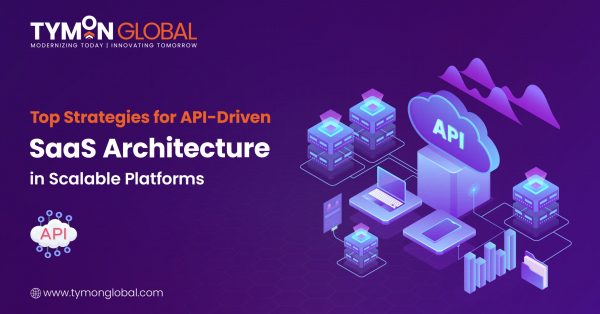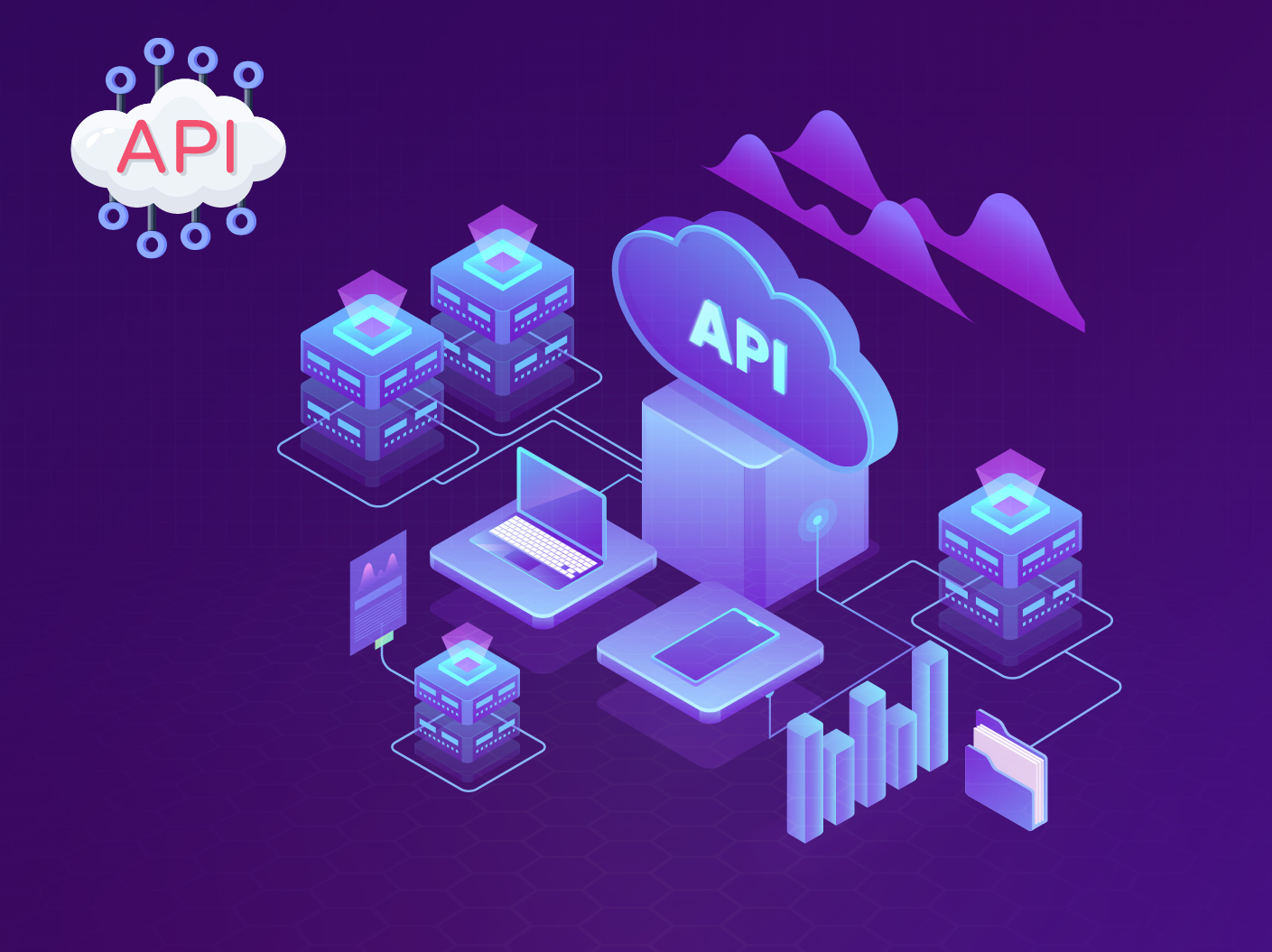
As firms grow, robust and adaptive structures become even more important. Real-time data processing, dynamic tasks, and seamless connection with other services are critical components of a high-quality SaaS platform. Here, an API-driven SaaS architecture is the way to go. Application Programming Interfaces (APIs) automate communication between various software components and external services; they are thus the backbone of contemporary SaaS systems.
With the proliferation of cloud computing, API-driven design in software as a service platforms will become increasingly important. According to a Forrester report, 87% of firms plan to incorporate APIs into their operations to improve the scalability, flexibility, and speed with which digital products are delivered.
In this blog, we’ll explore the key strategies for building scalable API-driven SaaS applications.
What is API-Driven Architecture in SaaS?
In SaaS, “API-driven architecture” refers to a system where APIs help apps or components communicate. APIs allow modular SaaS platforms to interface with internal and external systems. This architecture separates the database, application logic, and UI for flexible, scalable SaaS apps. Gartner reports that 70% of SaaS programs use API-first solutions for scalability, modularity, and future-proof integrations.
Why is a Scalable API Essential for Software Businesses?
Tymon Global provides API-driven client interaction through lightweight software development kits (SDKs) that exert minimal influence on application performance. Providing developers with these software development kits (SDKs) enables API access and diminishes the probability of errors. Another benefit they provide is the capability to immediately reattempt data transmissions upon restoration of connectivity.
Effective management of substantial data volumes will ensure our company’s success. At times, we receive up to 500,000 requests per second, but on average, we process thousands of requests each second. Our application programming interface (API) must be capable of constant variable demands.
Tymon Global primarily concentrates on data processing, although the company diligently strives to maintain an intuitive user interface and superior feature quality. Our comprehensive and scalable API works well on the backend and frontend, allowing this. If you’re interested in learning more about an API and its role in microservices architecture, check out our blog on the role of an API in microservices architecture.
Best Strategies for Building Scalable API-Driven SaaS Applications
Strategic decisions are mandated to develop scalable API-driven SaaS systems capable of managing growing traffic, adapting to company demands, and interacting with the latest technologies. Here are the main strategies:
- Implement Microservices for Decoupling: Microservices divide the application into self-contained modules that execute specialized procedures. This method lets groups work on different services without involving the platform, making scaling easier.
- Adopt Cloud Infrastructure: AWS, Azure, and Google Cloud deliver involved scaling of API-driven schedules. Cloud-native solutions let companies add help without major infrastructure advancements.
- Automate CI/CD Pipelines: For quick operations, continuous deployment (CD) and continuous integration (CI) are necessary. You can assure improved testing, faster delivery, and more release cycle consistency by automating the deployment procedure.
- Utilize API Management Tools: Kong, Apigee, and AWS API Gateway help organize APIs with rate control, monitoring, and documentation. These technologies are important for managing additional API calls while providing system efficiency and security
- Real-Time Data Processing with Event-Driven Architecture: Companies can automate processes and accept real-time understandings into user experience, system health, and operational implementation by executing event-driven architecture. EDA assures a perfect user experience and particularly improves system interpretation.
SaaS Architecture Best Practices
Best practices for APIs in scalable SaaS systems improve performance, scalability, and maintainability. User experience and growth are the goals of these practices:
- API-First Development: Build the system around APIs from the start so all components can communicate, and tech debt is reduced, and scaling is improved with this strategy.
- Microservices Architecture: Microservices enable SaaS application modularization and deployment with SaaS platform flexibility, update speed, and scalability efficiency improve with this architecture.
- Event-Driven Architecture (EDA): Event-driven systems ease real-time service data flow, and adaptable SaaS apps improve operational efficiency, with users reporting 40% operational agility advantages with EDA.
- API Gateway for Centralized Control: All external API calls are routed via an API gateway for centralized control. This automates security, routing, and load suspending for dependable performance.
- Security and Compliance: SaaS platforms should use OAuth and TLS encryption to protect sensitive client data in transit. Securing an atmosphere needs routine audits and penetration testing.
Why API-Driven SaaS is the Future?
For SaaS systems to grow and change, their design must be API-driven with real-time development and simple integration to improve data exchange, third-party tool integration, and product revisions. A survey found that 85% of firms saw improvements in time to market and operational efficiency as a result of API-driven designs.
This method lets firms develop without infrastructure constraints and focus on innovation and customer happiness, with APIs improving workflow management, data analytics, and monitoring. 78% of API-first organizations consider themselves more flexible and can respond faster to market changes.
The future lies in API-driven SaaS, which enables companies to develop rapidly, scale effectively, and promote customer-focused innovation.
Choose the Best Strategy for API-Driven SaaS Architecture from Tymon Global
API-driven design is a must for SaaS platforms in the present marketplace. Businesses may scale easily and provide excellent customer experiences by using microservices to build scalable platforms. Real-time monitoring, secure APIs, and automated scaling strengthen this method. These best practices make the architecture future-proof and able to support dynamic, high-performance applications as the API economy grows.
Tymon Global, a leader in API integration and digital transformation services, advises clients on scalability, security, and optimization to help them adopt API-driven SaaS systems. We are the appropriate partner for your SaaS transformation because we have helped firms shift to API-first models and microservices.
Ready to implement advanced API strategies into your SaaS platform? Contact us and schedule a demo today to scale and develop with API-driven architecture.
Frequently Asked Questions
Q What is the main benefit of API-driven architecture in SaaS?
A. API-driven architecture speeds up development, makes it easier to add new features, and makes integrations run more smoothly. This helps companies respond quickly to customer wants and expand their platform.
Q How can microservices enhance the performance of a SaaS platform?
A. Microservices break up big apps into smaller, easier-to-manage services. This makes it simpler to grow, update, and fix each part without affecting the whole system.
Q What is the importance of API versioning in SaaS platforms?
A. Versioning APIs makes sure that users can still use older versions of the API and that changes are made smoothly. It also lets businesses add new features without breaking old ones.
Q How do I make my SaaS platform more scalable?
A. Implement API-driven architecture, use microservices to decouple components, and incorporate cloud-native solutions for automated scaling and adaptability.
Q What are the best practices for securing APIs in a SaaS application?
A. Employ rate limitation, employ OAuth for safe access, and make sure your APIs are secured against unwanted use using robust encryption and validation procedures.
Q Why is monitoring important for API-driven SaaS applications?
A. Monitoring maintains that your APIs are operating at peak efficiency, identifying problems early and offering real-time insights for improved user happiness and performance.

